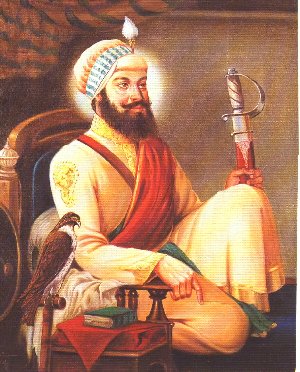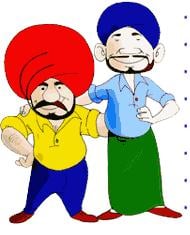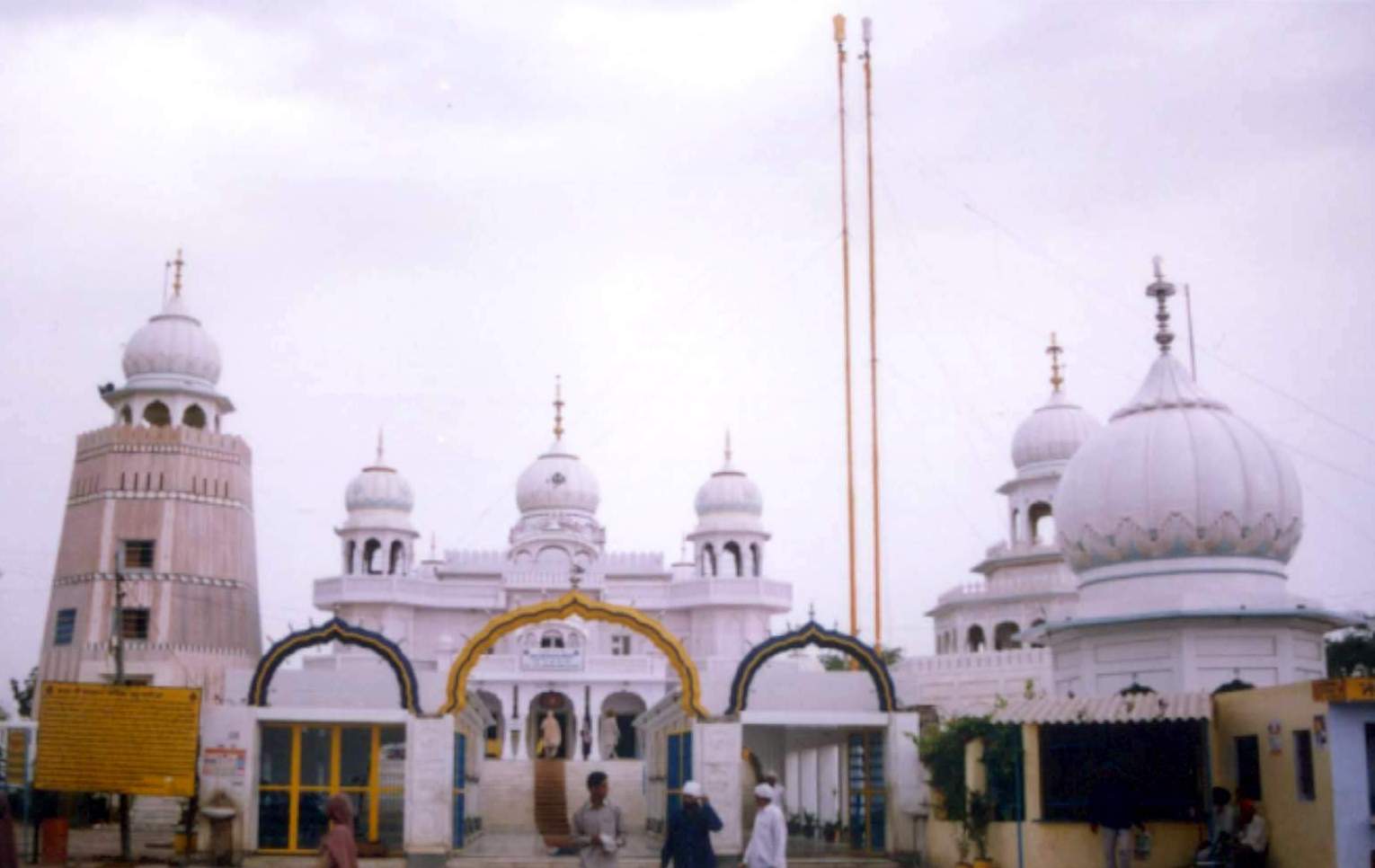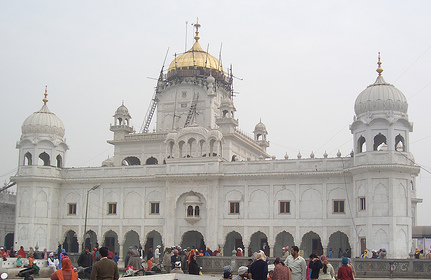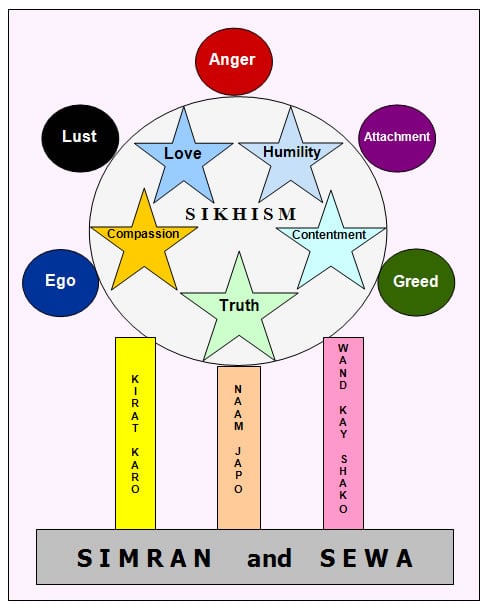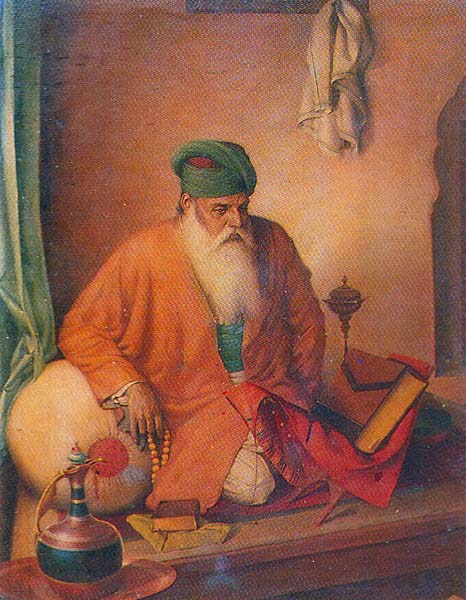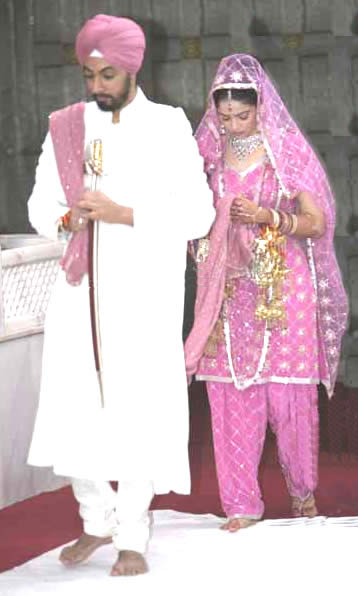Template:Did you know2
This page is mostly for youth (under 20) to know some less known and/or amazing fact's about Sikh Gurus, Sikh Shaheeds, Sikh Bhagats, Sikh History etc.
Did you know...
Pending
- In Akal Ustat, Guru Gobind Singh haven't wrote the last line complete and ended with title Ustat Sampooran i.e Eulogy Complete, to tell people that even he became tired explaining god's praise but he is so great that he could not finish his praise.
- Guru Nanak is Second Most Travelled person in the world(More than 28000 KM's. The first one is Ibn Battuta of Morooco.
- Bhai Mani Singh had 11 brothers. Except for one who died in anfancy all sacrificed their lives for Sikhi as martyrs.
- First gurdwara ever was in Eminabad.
- The first Gurdwara in North America was built in 1912 in Stockton, CA.
- First Gurdwara Sahib in Canada 19th, 1908 the was officially opened at 1866 west 2nd Avenue Vancouver B.C., under the management of the Khalsa Diwan Society. This Gurdwara Sahib served the Greater Vancouver Sikh community until new Gurdwara Sahib was occupied on April 25th, 1970. The 2nd Avenue property was sold for $100,000 to build a bigger (present) Gurdwara Sahib. It was very unfortunate to lose this historical Sikh monument. The present Gurdwara Sahib's foundation stone was laid on March 30th, 1969 at 8000 Ross Street, Vancouver B.C. on a 2.75 acre lot at the corner of Ross Street and S.E. Marine Drive. The construction was completed in 1970 by the Haebler Construction Co. Ltd. at the cost of $433,000. The building of the Gurdwara Sahib was designed and built by the well known architectural firm of M/S Erickson and Massey. On November 30th,1969, the 500th birthday of Guru Nanak Dev Ji, the opening ceremony of the present Gurdwara Sahib was performed. Although the building was not occupied until April 25th, 1970.
- The first gurdwara built in Britain was in 1911 in Putney, this was with financial support from the Maharaja of Patiala. He was among a very few but in their cases notable Sikh visitors to Britain at this time. The majority came after World War Two.
- In Jaap Sahib wrote by Guru Gobind Singh there are 10 Chants in whole bani:
1) Chapae Chant (1 Vaar)
2) Bhujang Paryat Chant (6 Vaars)
3) Chachri Chant (5 Vaars)
4) Charpat Chant (2 Vaars)
5) Ruaal Chant (1 Vaar)
6) Madhubar Chant (2 Vaars)
7) Bhagwati Chant (2 Vaars)
8) Rasawal Chant (1 Vaar)
9) Harbolmana Chant (1 Vaar)
10) Achari Chant (1 Vaar)
- Baba Makhan Shah Labana a renowed trader, who found ninth nanak, met Guru Har Gobind ji in mota tanda in Jammu & Kashmir when guru je came to met him with Bhai Dasa (who was father of baba makhan shah & joined Guru Hargobind during guru's north travels)
Done
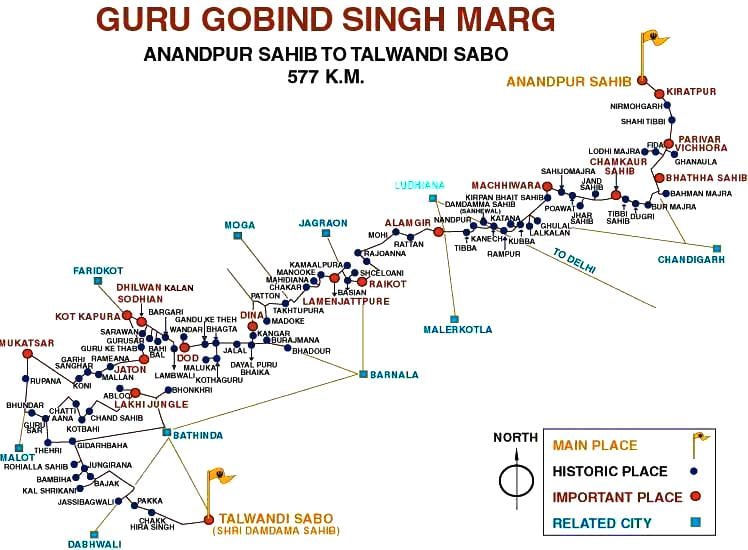
click to enlarge
- .... that Guru Gobind Singh marg is the journey which started in December 1705 of the tenth Sikh master from Anandpur Sahib to Talwandi Sabo a distance of about 588 kilometres. Every place on this journey is sacred and has sanctity and is marked by the holy presence of this great personality....
- .... that it was at the place where the holy shrine, Takhat Sachkhand Sri Patna Sahib stands in Bihar India, that Guru Gobind Singh, the tenth Sikh Guru was born in 1666.
- .... that the history of the Ramgarhia bunga is inseparable from the history of the Golden Temple because its very existence is dependent on the latter. During the reign of the Mughal Emperors the temple was damaged or destroyed no less then seven times. But each time it was rebuilt by the Sikhs.
- ....that Guru Gobind Singh fought 4 battles and won all of them. Another fact is that, in all the battles the Khalsa was the defensive force never the initiators of an attack.
- ....that Guru Nanak Dev Ji traveled as far north as Azerbaijan in their 4th Udasi.
- ....that it is believed that Guru Nanak Dev Ji was around 7 feet tall.
- ....that Sant Jarnail Singh Bhindranwale memorized the following Bani’s: Sidh Gosht & Dakhani Oankar in 1 day, Sukhmani Sahib in 13 days and Asa Di Vaar in 8 hours.
- ....that Guru Gobind Singh Ji was not all that tall. He was probabably around 5ft 4inches. (according to Yogi Bhajan his exact height was 5' 4.2")
- ....that although Guru Gobind Singh Ji wasn't tall, he had extraordinary & superhuman strength, stamina and wisdom. He usually breathed after one minute and could wield two swords so swiftly that no arrow could strike his body while He weilded the swords.
- ....that it is evident from Guru Har Gobind Ji's kachhera and other clothing, that he was 6'7" (about 2m 0.7 cm) and had a chest of size of 56 inches!
- ....that there are 240 million Nanakpanthis in the world! Most of them live in Sindh (Pakistan), Uttar Pradesh, Bihar and other remote parts of India. They are being neglected by our own 'mainstream' Sikhs and many are converting to other religions due to lack of Parchar by Sikh religious body.
- ....that you can locate the kirtan of thousands of Gurbani shabads by visiting the Kirtan websites listed at SikhiWiki. And also that you can add your favourite kirtan site here!
- ....the Significance of Vaisakhi - For many 1000's of years, April has been the time when farmers have put their sickles to harvest and collected the precious life saving crops...
- ....that the 12 O'clock joke is not a slam against Sardars; just read the following story here and here.
- ....that the Jagriti Yatra procession to celebrate the 300 years of Guruship of Guru Granth Sahib was scheduled to visit Kathua on 7th of April, but, due to the weather and huge crowds it could not reach the city on time, but finally arrived a full day late on 8th April 2008....
- ....that the Guru has pronounced that Kirtan is the magical formula that keeps the human soul afloat in the dark era of Kaljug provided the devotee sings with his mind focused thus: "Kaljug meh kīrṯan parḝẖĝnĝ. Gurmukẖ japīai lĝė ḝẖiĝnĝ. In this Dark Age of Kaljug, Kirtan is supreme when the devotee sings with focus"
- ....that Bhai Baghel Singh (d. 1802), who in 1765 succeeded Karora Singh as leader of the Karor singhia misl or chiefship, is celebrated in Sikh history as the vanquisher of Mughal Delhi. And that he was resposible for the construction of many of the city's Gurdwaras to honor the Sikh Shaheeds who were martryed in Delhi.
- .... that Guru Nanak went to Nepal? The temple in his honour is now left to birds who make their home there and sing to their hearts content and the occasional visitor who either knows it is there or has stumbled there by chance after coming upon the small weathered sign which says, “Guru Nanak Math (27°43'31"N 85°18'19"E)”....
- ....that Pearl S Buck, Nobel Laureate, when writing about the English translation of Guru Granth Sahib said: "I have studied the scriptures of other great religions, but I do not find elsewhere the same power of appeal to the heart and mind as I find here in these volumes...."
- ....that Anand Karaj is the name given to the Sikh wedding ceremony, literally translated as "Blissful Occasion". Sikhs regard marriage as a sacred bond of mutual dependence between a man and a woman.
- ....that the Sikh name, Ajit or Ajeet means "Invincible" or "unconquerable" in Punjabi. Do you know the meaning of "Amardev" or "Satpreet"?. Why not explore our database of over 1000 Sikh names here
.... that the three basic requirements of a Sikh are: Nam Japna - Rise in the Amrit Vela and meditate on God's Name; Dharam Di Kirt Karna - Earn one's living righteously by the sweat of the brow or the industry, effort and conscientiousness of the mind and Vand Chhakna - Share what one has with others.
.... that the Panj Granthi is a pothi or small book containing five chosen texts, from the Guru Granth Sahib. The word "panj" means "five" and "granthi" is the diminutive form of "granth" (holy book)
.... that Alahunian is the name given to the Bani by Guru Nanak. It is a composition in measure Vadahans in the Guru Granth Sahib on page Page 578 and refers to a dirge (funeral song) wailingly sung in chorus by women mourning the death of a close relation. Etymologically, the word means an "utterance in praise of a departed person".
..... that Siropa is a term adopted from Persian sar-o-pa (head and foot) or sarapa (head to foot) meaning an honorary dress and is used in Sikh vocabulary for a garment, scarf or a length of cloth bestowed on someone as a mark of honour.
....that the Panj Piare (five beloved ones) is the name given to the five Sikhs, Bhai Daya Singh, Bhai Dharam Singh, Bhai Himmat Singh, Bhai Mukham Singh and Bhai Sahib Singh who, after voluteering their heads to their Guru, became the first five Sikhs/Singhs to take Amrit in 1699 and together initiated the sixth Khalsa—Guru Gobind Singh ji!...
.....that Takhat Damdama Sahib is one of five takhats or Seat of Authority of the Sikhs. This takhat is situated at Batinda in Punjab, India and is the place where Guru Gobind Singh, the tenth Guru of the Sikhs prepared the full version of the Sikh Scriptures called Sri Guru Granth Sahib in 1705. What are the names of the other four Takhats?
.... that Bhai Joginder Singh Riaar Ji (Ludhiana wale) and partners are a ragi jatha who are well known to most Sikhs globally. Bhai sahib is from Gurdaspur district in Punjab and is an exceptional vocalist and very able harmonium player and they have enlightened Guru-ki-sangat in India and other parts of the world with their beautiful kirtan.
.....that the Sikhs believe that all life, including human life, comes from God. God is the Creator of the universe and the force that keeps it in existence.
.... that Langar is a free Sikh kitchen which was started by the first Sikh Guru, Guru Nanak Dev Ji in the fifteenth century. It is designed to uphold the principle of equality between all people of the world regardless of their religion, caste, colour, creed, age, gender or social status. In addition to the ideals of equality, the tradition of Langar expresses the ethics of sharing, community, inclusiveness and oneness of all humankind. "..the Light of God is in all hearts", said Guru Nanak (SGGS 282)
.... that Bani (Punjabi (Punjabi: ਬਾਣੀ)) is short for Gurbani (Punjabi (Punjabi: ਗਰਬਾਣੀ)) and is the term used by Sikhs to refer to various sections of the Holy Text that appears in their several Holy Books. These Banis are often found in small Gutkas or Small Books containing sections of Gurbani.
..... that Gurdwara Dukh Nivaran Sahib Patiala marks the place where Guru Tegh Bahadur visited village Lehal on 24 January 1672 and stayed under a banyan tree by the side of a pond. Soon the sickness in the village subsided. The site where the Guru had sat came to be known as "Dukh Nivaran" literally meaning Eradicator of suffering.
....that on 10 October, 1982, a National Protest by UK Sikhs was organised to highlight and demand the right of children to go to school wearing their turbans.
.... that the tercentenary celebration of the Guruship of Sri Guru Granth Sahib is to be undertaken on a massive scale in October 2008 at Takhat Sachkhand Shri Hazur Abchalnagar Sahib in Nanded, Maharashtra, India.
.....that one of the five forts in Anandpur Sahib built by Guru Gobind Singh was called Keshgarh and that saying Keshgarh Fort is redundant as Garh means fort in Punjabi.
.....that Guru Ram Das ji was born at Chuna Mandi Bazaar, Lahore on 24th September 1534 and spent the first seven years of his life here and that his name before obtaining Guruship was Bhai Jetha which means the first born.
..... that it is every Sikh's duty to defeat the Five vices: Kam (Lust), Krodh (Rage), Lobh (Greed), Moh (Attachment) and Ahankar (Ego). Also that the Guru Granth Sahib gives clear warning about these five plundering your life - read Guru Granth Sahib against lust on this issue.
..... that on the 5 January 2008, the Sikhs worldwide celebrated the 340th anniversary of the birth of Guru Gobind Singh.
.... that Bani (Punjabi (Punjabi: ਬਾਣੀ)) is short for Gurbani (Punjabi (Punjabi: ਗਰਬਾਣੀ)) and is the term used by Sikhs to refer to various sections of the Holy Text that appears in their several Holy Books. These Banis are often found in small Gutkas or Small Books containing sections of Gurbani.
.... that the three requirements of a Sikh are: Nam Japna - Rise in the Amrit Vela and meditate on God's Name; Dharam Di Kirt Karna - Earn one's living righteously by the sweat of the brow or the industry, effort and conscientiousness of the mind and Vand Chhakna - Share what one has with others
.... that Alahunian is the name given to the Bani by Guru Nanak. It is a composition in measure Vadahans in the Guru Granth Sahib on page Page 578 and refers to a dirge (funeral song) wailingly sung in chorus by women mourning the death of a close relation. Etymologically, the word means an "utterance in praise of a departed person".
..... that the Kashmiri Brahmins came to Guru Tegh Bahadar at Anandpur in May 1675 for his council against their threatened forced conversion by Aurangzeb. And that Kirpa Ram led this group of Kashmiri Pandits driven to dire straits by the Moghuls' persecution.
....that Tarn Taran (31°27'N, 74°56'E) is an important centre of Sikh pilgrimage 24 km south of Amritsar, which was founded by Guru Arjan in 1596. Six years earlier, on 13 April 1590, he had inaugurated the conversion of a natural pond lying along the Delhi Lahore highway into a rectangular tank. And of all things, that the bricks and thir kilns produced for the Sarovar and Gurdwara were stolen and used by the Moghuls to build a city. Which city Sikhs later tore down and reclaimed the bricks.
....that Anandpur Sahib (City of Bliss) is one of the holiest places of the Sikhs, second only to Amritsar.
....that the Panj Piare (five beloved ones) is the name given to the five Sikhs, Bhai Daya Singh, Bhai Dharam Singh, Bhai Himmat Singh, Bhai Mukham Singh and Bhai Sahib Singh after offering their heads to Guru Gobind Singh were the first to take Amrit in 1699 and in turn initiated the sixth Khalsa, Sant-Soldier Guru Gobind Singh ji!...
....that the Makindu Sikh Temple is located about 100 miles (160km) from Nairobi on the main Nairobi-Mombasa Road and that it was built in 1926 by the Sikhs who were working on the construction of the railway line from the coast (Mombasa) inland to Lake Victoria and beyond to Uganda.
..... that Hazrat Mian Mir was a famous Sufi Saint Muslim who is highly respected by the Sikhs. He was a close friend of the Sikh leaders Guru Ram Das and Guru Arjan Dev. It was upon the wish of the former and the invitation of Guru Arjan that, in his patchwork vestments, he laid the foundation stone of the famous Sikh Harmandir Sahib now Golden Temple in Amritsar on 3 January 1588.
..... that the word Singh from the Sanskrit word sinha means Lion and is an essential component of the name for a Sikh male after taking Pahul.
..... that the Sikh concept of Sarbaht dah Phahla which means "Blessings for Everyone" or literally "May everyone Prosper" is a new concept for many people and is not common knowledge for many followers of the Sikh religion.
.....that Guru Ram Das ji was born at Chuna Mandi Bazaar, Lahore on 24th September 1534 and spent the first seven years of his life there and that his name before obtaining Guruship was Bhai Jetha which means the first born.
.....that the word Ardas is derived from the Persian word 'Arazdashat', meaning a request, a supplication, a prayer, a petition or an address to a superior authority.
.....that Takhat Damdama Sahib is one of five takhats or Seat of Authority of the Sikhs. This takhat is situated at Batinda in Punjab, India and is the place where Guru Gobind Singh, the tenth Guru of the Sikhs prepared the full version of the Sikh Scriptures called Sri Guru Granth Sahib in 1705. Do you know the names of the other four Takhats?
.... that Bhai Joginder Singh Riaar Ji (Ludhiana wale) and partners are a ragi jatha who are well known to most Sikhs globally. Bhai sahib is from Gurdaspur district in Punjab and is an exceptional vocalist and very able harmonium player and they have enlightened Guru-ki-sangat in India and other parts of the world with their beautiful kirtan.
.....that the Sikhs believe that all life, including human life, comes from God. God is the Creator of the universe and the force that keeps it in existence.
.....that for the Sikhs, the final goal of life is to reunite or merge with God (Mukti). The Sikh Gurus taught that to achieve this goal it was important to work hard at developing positive human qualities which lead the soul closer to God.
- .... that when Guru Amar Das came to meet Guru Angad Dev, Guru Amar Das was 62 years old and Guru Angad Dev was 37 year of age.
....that the Sikh wedding ceremony is called Anand Karaj and that it basically translated to "Blissful Occasion" - Also that a true partnership in marriage is made between those who are united in spirit as well as in mind and body.
- .... that according to Sikh history, Gurgadi was passed from Guru to Guru in following way:
Guru Nanak to Guru Angad Dev (No Family Relation)
Guru Angad to Guru Amar Das (Father to Daughter's father in law)
Guru Amar Das to Guru Ram Das (Father In Law to Son in law)
Guru Ram Das to Guru Arjun (Father to son)
Guru Arjun Dev to Guru Hargobind (Father to Son)
Guru Hargobind to Guru Har Rai (Grandfather to Grandson)
Guru Har Rai to Guru Harkrishan (Father to Son)
Guru Harkrishan to Guru Tegh Bahadur (Great nephew to Great uncle)
Guru Tegh Bahadur to Guru Gobind Singh (Father to Son)
Guru Gobind Singh to Guru Granth Sahib (Never done before!)
- ...that only one of the Guru's wife is mentioned in the Guru Granth Sahib; it is the second master, Guru Angad Dev's wife Mata Khivi.
- ....that in the Guru Granth Sahib, Barahmaha is written twice, once by Guru Nanak in Raag Tukhari and a second time by Guru Arjun in Raag Majh.

